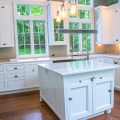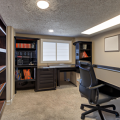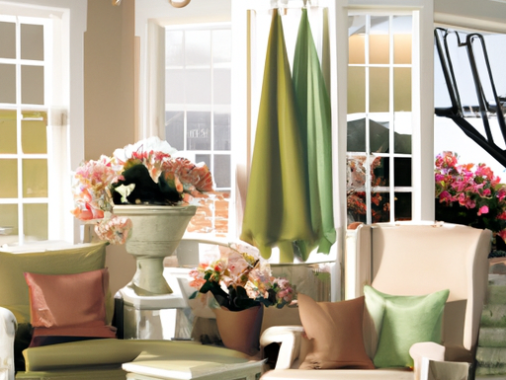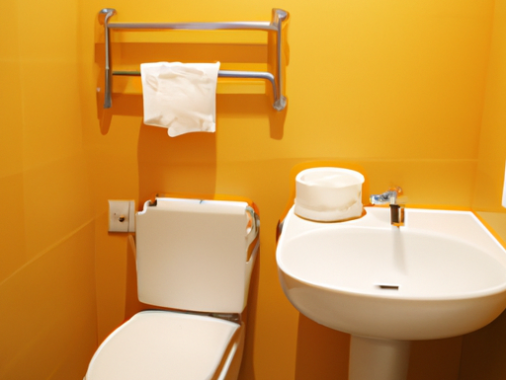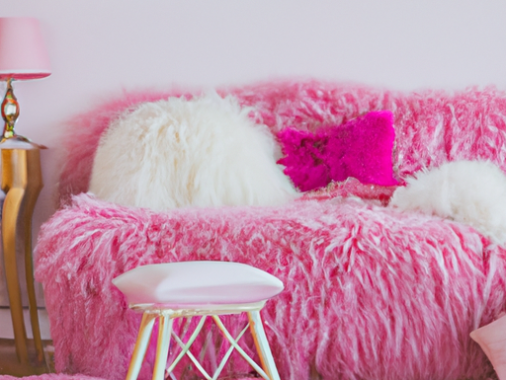-
Table of Contents
- Introduction
- How to Decorate a House with Concrete Walls
- The Benefits of Building a House with Concrete Walls
- The Pros and Cons of Living in a House with Concrete Walls
- How to Insulate a House with Concrete Walls
- The Best Paint Colors for a House with Concrete Walls
- Creative Ways to Use Concrete Walls in Home Design
- The Latest Trends in Concrete Wall Design for Homes
- Q&A
- Conclusion
Introduction
The concept of a house with concrete walls is becoming increasingly popular among homeowners who are looking for a durable and energy-efficient home. Concrete walls provide superior insulation, soundproofing, and fire resistance, making them an ideal choice for those who want to create a safe and comfortable living space. Additionally, concrete walls are incredibly strong and can withstand extreme weather conditions, making them a great choice for those who live in areas prone to natural disasters. With the right design and construction, a house with concrete walls can be a beautiful and functional home.
How to Decorate a House with Concrete Walls
Concrete walls can be a great way to add a modern and industrial feel to a home. Decorating a house with concrete walls can be a challenge, but with the right approach, it can be done in a way that is both stylish and inviting. Here are some tips for decorating a house with concrete walls.
1. Choose a Color Palette: When decorating a house with concrete walls, it is important to choose a color palette that will complement the walls. Neutral colors such as white, gray, and beige are often the best choice for concrete walls, as they will help to soften the look of the walls and make the space feel more inviting.
2. Add Texture: Adding texture to the walls can help to break up the monotony of the concrete and make the space feel more inviting. Textured wallpaper, wall hangings, and rugs are all great ways to add texture to the walls.
3. Use Natural Materials: Natural materials such as wood, stone, and metal can help to add warmth and texture to the space. Wood furniture, stone accents, and metal fixtures can all help to create a cozy and inviting atmosphere.
4. Add Color: Adding color to the space can help to break up the monotony of the concrete walls. Brightly colored furniture, artwork, and accessories can all help to add a pop of color to the space.
5. Incorporate Plants: Incorporating plants into the space can help to soften the look of the concrete walls and make the space feel more inviting. Potted plants, hanging plants, and even artificial plants can all help to add a touch of nature to the space.
By following these tips, you can create a stylish and inviting space with concrete walls. With the right approach, concrete walls can be a great way to add a modern and industrial feel to a home.
The Benefits of Building a House with Concrete Walls
Concrete walls are a popular choice for many homeowners when building a house. This is because concrete walls offer a variety of benefits that other building materials cannot provide. Here are some of the advantages of building a house with concrete walls.
Durability: Concrete walls are incredibly durable and can withstand extreme weather conditions. They are also resistant to fire, pests, and other environmental hazards. This makes them an ideal choice for those who live in areas prone to natural disasters.
Energy Efficiency: Concrete walls are excellent insulators, which means they can help keep your home warm in the winter and cool in the summer. This can help reduce your energy bills and make your home more comfortable.
Low Maintenance: Concrete walls require very little maintenance. They are easy to clean and do not require painting or staining. This makes them a great choice for those who want a low-maintenance home.
Cost-Effective: Concrete walls are a cost-effective option for building a house. They are relatively inexpensive compared to other building materials and can be installed quickly and easily.
These are just a few of the benefits of building a house with concrete walls. If you are considering building a home, concrete walls may be the perfect choice for you. They are durable, energy-efficient, low-maintenance, and cost-effective.
The Pros and Cons of Living in a House with Concrete Walls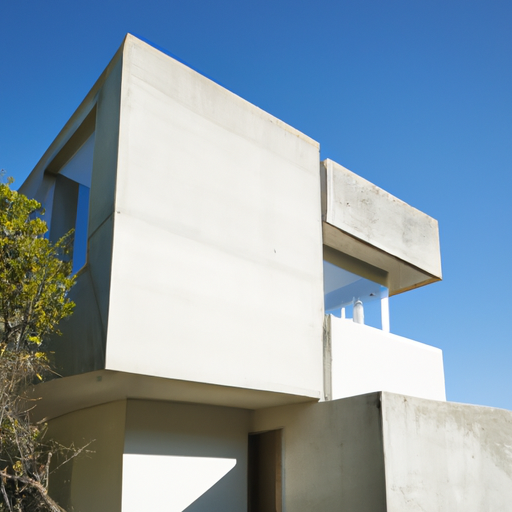
Living in a house with concrete walls has both advantages and disadvantages. It is important to consider both before making a decision.
Pros
One of the main advantages of living in a house with concrete walls is that it is very energy efficient. Concrete walls are excellent insulators, meaning that they can keep the temperature inside the house more consistent. This can help to reduce energy costs, as the house will not require as much heating or cooling.
Concrete walls are also very durable and require little maintenance. They are not prone to damage from water, pests, or other environmental factors. This makes them a great choice for those who want a house that will last for many years.
Finally, concrete walls can provide a sense of security. They are difficult to break through, making them a great choice for those who want to feel safe in their home.
Cons
One of the main drawbacks of living in a house with concrete walls is that they can be difficult to decorate. Concrete walls are not very conducive to hanging pictures or other decorations, and they can make a room feel cold and uninviting.
In addition, concrete walls can be expensive to install. They require a lot of labor and materials, making them a costly option.
Finally, concrete walls can be difficult to repair if they become damaged. This can be a major inconvenience if something needs to be fixed.
Overall, living in a house with concrete walls has both advantages and disadvantages. It is important to consider both before making a decision.
How to Insulate a House with Concrete Walls
Insulating a house with concrete walls can be a challenging task, but it is possible with the right materials and techniques. Concrete walls are often found in older homes and can be difficult to insulate due to their thickness and lack of insulation. However, with the right materials and techniques, it is possible to insulate a house with concrete walls.
The first step in insulating a house with concrete walls is to determine the type of insulation that is best suited for the job. There are several types of insulation available, including fiberglass, cellulose, and spray foam. Each type of insulation has its own advantages and disadvantages, so it is important to research the different types and decide which one is best for the job.
Once the type of insulation has been determined, the next step is to install it. Fiberglass insulation is the most common type of insulation used for concrete walls and is relatively easy to install. It is important to make sure that the insulation is installed properly and that all gaps and cracks are sealed. Cellulose insulation is also an option, but it is more difficult to install and requires more time and effort. Spray foam insulation is the most effective type of insulation for concrete walls, but it is also the most expensive and requires professional installation.
Once the insulation has been installed, the next step is to seal the walls. This can be done with a variety of materials, including caulk, foam sealant, and weatherstripping. It is important to make sure that all gaps and cracks are sealed properly to ensure that the insulation is effective.
Finally, it is important to make sure that the insulation is properly maintained. This includes checking for any signs of damage or deterioration and making sure that the insulation is not exposed to moisture or extreme temperatures. Regular maintenance will help to ensure that the insulation remains effective and will help to keep the house warm and comfortable.
Insulating a house with concrete walls can be a challenging task, but it is possible with the right materials and techniques. With the right materials and techniques, it is possible to insulate a house with concrete walls and keep it warm and comfortable.
The Best Paint Colors for a House with Concrete Walls
When it comes to choosing paint colors for a house with concrete walls, there are a few key considerations to keep in mind. First, it is important to consider the existing color of the concrete walls. If the walls are a light color, such as white or beige, then a darker color can be used to create a dramatic contrast. Darker colors, such as navy blue, charcoal gray, or black, can be used to create a modern and sophisticated look. If the walls are a darker color, such as gray or brown, then lighter colors can be used to create a more subtle and calming atmosphere.
Neutral colors, such as taupe, beige, or cream, are also great options for a house with concrete walls. These colors can be used to create a warm and inviting atmosphere, while still providing a neutral backdrop for other colors and decor.
Bright colors, such as yellow, orange, or red, can also be used to create a vibrant and energetic atmosphere. These colors can be used to create a cheerful and inviting space, while still providing a neutral backdrop for other colors and decor.
Finally, it is important to consider the overall style of the house when choosing paint colors. If the house has a modern or contemporary style, then bold and bright colors can be used to create a vibrant and energetic atmosphere. If the house has a more traditional style, then softer and more muted colors can be used to create a more calming and inviting atmosphere.
No matter what colors are chosen, it is important to remember that the colors should complement the existing concrete walls and the overall style of the house. With careful consideration and planning, the perfect paint colors can be chosen to create a beautiful and inviting atmosphere in any house with concrete walls.
Creative Ways to Use Concrete Walls in Home Design
Concrete walls are becoming increasingly popular in home design due to their versatility and durability. They can be used to create a modern, industrial look or to add a unique touch to any room. Here are some creative ways to use concrete walls in home design:
1. Accent Wall: Concrete walls can be used to create a stunning accent wall in any room. They can be painted in a variety of colors to match the existing décor or left in their natural state for a more industrial look.
2. Feature Wall: Concrete walls can be used to create a feature wall in any room. They can be used to create a unique focal point or to add texture and interest to a room.
3. Fireplace Surround: Concrete walls can be used to create a modern, industrial fireplace surround. They can be painted in a variety of colors to match the existing décor or left in their natural state for a more industrial look.
4. Outdoor Living Space: Concrete walls can be used to create an outdoor living space. They can be used to create a patio, deck, or outdoor kitchen.
5. Home Office: Concrete walls can be used to create a modern, industrial home office. They can be painted in a variety of colors to match the existing décor or left in their natural state for a more industrial look.
Concrete walls are a great way to add a unique touch to any room. They are durable, versatile, and can be used to create a modern, industrial look or to add texture and interest to any room. With a little creativity, concrete walls can be used to create a stunning accent wall, feature wall, fireplace surround, outdoor living space, or home office.
The Latest Trends in Concrete Wall Design for Homes
Concrete walls are becoming increasingly popular in home design due to their versatility and durability. They can be used to create a variety of looks, from modern and industrial to rustic and natural. Here are some of the latest trends in concrete wall design for homes.
One of the most popular trends is the use of exposed concrete walls. This look is achieved by leaving the concrete walls unfinished, allowing the natural texture and color of the concrete to be visible. This look is perfect for modern and industrial-style homes, as it adds a unique and edgy touch.
Another trend is the use of concrete walls with a painted finish. This look is achieved by painting the concrete walls with a variety of colors, such as white, gray, or black. This look is perfect for creating a modern and sleek look in any home.
Concrete walls can also be used to create a rustic and natural look. This look is achieved by using a variety of textures, such as stucco, brick, or stone. This look is perfect for creating a cozy and inviting atmosphere in any home.
Finally, concrete walls can also be used to create a unique and eye-catching look. This look is achieved by using a variety of colors, textures, and patterns. This look is perfect for creating a bold and unique statement in any home.
These are just a few of the latest trends in concrete wall design for homes. With the right design, concrete walls can be used to create a variety of looks, from modern and industrial to rustic and natural.
Q&A
1. What are the benefits of having a house with concrete walls?
A house with concrete walls offers many benefits, including increased energy efficiency, improved soundproofing, fire resistance, and durability. Concrete walls also provide a strong foundation for the structure and can be designed to be aesthetically pleasing.
2. Are concrete walls more expensive than other types of walls?
Yes, concrete walls are typically more expensive than other types of walls due to the materials and labor required to construct them. However, the long-term benefits of having a house with concrete walls often outweigh the initial cost.
3. How long do concrete walls last?
Concrete walls can last for decades if they are properly maintained. The lifespan of concrete walls depends on the quality of the materials used and the environment in which they are installed.
4. Are concrete walls fireproof?
Concrete walls are not completely fireproof, but they are more resistant to fire than other types of walls. Concrete walls can help slow the spread of fire and provide additional protection for the occupants of the house.
5. Can concrete walls be insulated?
Yes, concrete walls can be insulated to improve energy efficiency and reduce noise. Insulating concrete walls can also help to regulate the temperature inside the house.
6. Are concrete walls difficult to maintain?
No, concrete walls are relatively easy to maintain. Regular cleaning and sealing can help to protect the walls from moisture and other elements.
7. Can concrete walls be painted?
Yes, concrete walls can be painted to give them a more attractive appearance. However, it is important to use a paint that is specifically designed for use on concrete walls.
Conclusion
In conclusion, concrete walls are a great choice for a house. They are strong, durable, and provide excellent insulation. They are also fire-resistant and can help reduce noise pollution. They are also relatively easy to maintain and can last for many years. With all these benefits, concrete walls are an excellent choice for any home.
